High Speed Motor Drive Technology and Its Development Trend
High-speed motors have attracted more and more attention due to their obvious advantages such as high power density, small volume and weight, and high work efficiency. An efficient and stable drive system is the key to give full play to the excellent performance of high-speed motors. This paper mainly analyzes the difficulties of high-speed motor drive technology from the aspects of control strategy, rotation angle estimation and power topology design, and summarizes the current research results at home and abroad. Summarize and look forward to high-speed motor drive technology and its development trend.
Due to its high power density, small volume and weight, high work efficiency and many other advantages, high-speed motors are widely used in aerospace, national defense security, production and life and other fields, and are the necessary research content and development direction today. In high-speed load occasions such as electric spindles, turbomachinery, micro gas turbines, and flywheel energy storage, the application of high-speed motors can realize a direct drive structure, save the transmission device, significantly reduce the volume weight and maintenance costs, and greatly improve reliability. Extremely broad application prospects. High-speed motors usually refer to motors whose speed exceeds 10kr/min or whose difficulty value (the product of the square root of speed and power) exceeds 1×105. Figure 1 shows the comparison of relevant data of some representative prototypes of high-speed motors at home and abroad. The curved dashed line in Figure 1 is 1×105 Difficulty Value Contour.
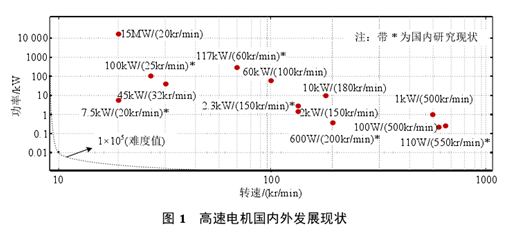
1. Difficulties in high-speed motor drive technology
1. System stability problem at high base frequency
When the motor is operating at a high base frequency, the carrier frequency of the high-speed motor drive system is relatively low due to the limitations of the analog/digital conversion time, the execution time of the digital controller algorithm, and the switching frequency of the inverter, resulting in a significant decrease in the performance of the motor.
2. Fundamental frequency high precision rotor position estimation problem
At high speeds, the accuracy of the rotor position is critical to the performance of the motor. Due to the low reliability of mechanical position sensors, large size and high cost, position sensorless algorithms are often used in high-speed motor control systems. However, under the condition of high operating fundamental frequency, the position sensorless algorithm is easily affected by non-ideal factors such as the nonlinearity of the inverter and space harmonics, loop filter and inductance parameter deviation, resulting in obvious rotor position estimation errors.
3. Ripple suppression problem of high-speed motor drive system
The inductance of a high-speed motor is small, and there is inevitably a problem of large current ripple. Additional copper loss, iron loss, torque ripple, and vibration noise caused by high current ripple will greatly increase the loss of the high-speed motor system and reduce the performance of the motor, and the electromagnetic interference caused by high vibration noise will accelerate the aging of the drive. The above problems have greatly affected the performance of high-speed motor drive systems, and the research on optimal design of low-loss hardware circuits is very important for high-speed motor drive systems. To sum up, the design of a high-speed motor drive system needs to comprehensively consider many factors, mainly including technical difficulties such as current loop coupling, system delay, parameter error, and current ripple suppression. The rotor position estimation accuracy and power topology design put forward extremely high requirements, as shown in Figure 2 .
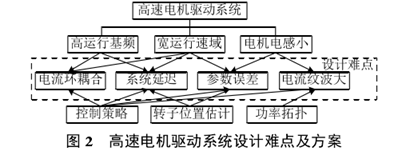
2. Control strategy of high-speed motor drive system
1. Modeling of high-speed motor control system
The high-speed motor drive system has the characteristics of high operating base frequency and low carrier frequency ratio, and the influence of motor self-coupling and delay on the system can no longer be ignored. Therefore, considering the above two factors, the reconstruction modeling analysis of the high-speed motor drive system is the key to further improve the drive performance of the high-speed motor.
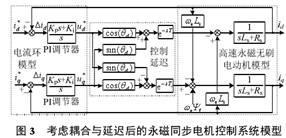
2. High-speed motor decoupling control technology
FOC control technology is the most widely used in high-performance motor drive systems . For the serious problem of system coupling caused by high operating fundamental frequency, the current main research direction is decoupling control strategy. The currently researched decoupling control strategies can be divided into: model-based decoupling control strategies, disturbance compensation-based decoupling control strategies and complex vector regulator-based decoupling control strategies. Model-based decoupling control strategies mainly include feedforward decoupling and feedback decoupling, but this strategy is sensitive to motor parameters, and may even lead to system instability in the case of large parameter errors, and complete decoupling cannot be achieved. The poor coupling performance limits its application range, and the latter two decoupling control strategies are current research hotspots.
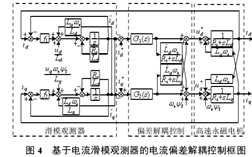
3. High-speed motor system delay compensation technology
Decoupling control technology can better solve the coupling problem of high-speed motor drive system, but the delay link introduced by the delay still exists, so it is necessary to actively compensate the system delay effectively. Currently, active compensation strategies for system delays are mainly divided into two types: model-based compensation strategies and model-independent compensation strategies.
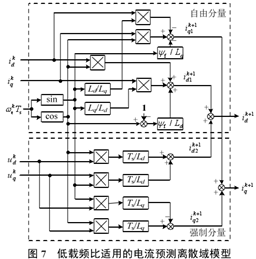
Combining the current academic research results on high-speed motor drive technology and the existing problems, the development and research directions of high-speed motors mainly include: 1 ) Research on issues related to accurate prediction of high fundamental frequency current and active compensation delay; 3 ) High dynamics of high-speed motors Research on performance control algorithm; 4 ) Research on precise estimation of corner position of ultra-high speed motor and estimation model of rotor position in full speed range; 5 ) Research on full error compensation technology in position estimation model of high speed motor; 6 ) Research on power topology of high speed motor with high frequency and high loss .



























 XINDA
XINDA